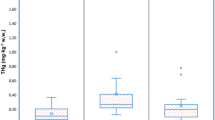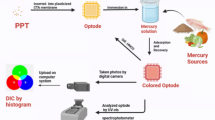Abstract
EARLY in 1920 Harkins and Broeker reported a separation of chlorine into isotopes, which amounted at that time to an increase in density equal to 1550 parts per million. About six months later Brønsted and von Hevesy reported a separation of mercury, which was, however, only about one-thirtieth as great, or 50 parts per million. On account of the slightness of the density change reported for mercury, the evidence, that it had been separated did not appear to be conclusive, so it seemed worth while to attempt a confirmation by the same method—that is, a vaporisation at low pressures. As a result of 4 cuts of 2 on the heavy fraction or residue the density has been increased by 69 parts per million, and by the same number of cuts on the light fraction it has been decreased 62 parts, or the total density change obtained is 133 parts pet million, or 0.027 units of atomic weight.
This is a preview of subscription content, access via your institution
Access options
Subscribe to this journal
Receive 51 print issues and online access
$199.00 per year
only $3.90 per issue
Buy this article
- Purchase on SpringerLink
- Instant access to full article PDF
Prices may be subject to local taxes which are calculated during checkout
Similar content being viewed by others
Author information
Authors and Affiliations
Rights and permissions
About this article
Cite this article
HARKINS, W., MULLIKEN, R. The Separation of Mercury into Isotopes. Nature 108, 146 (1921). https://doi.org/10.1038/108146a0
Issue date:
DOI: https://doi.org/10.1038/108146a0



